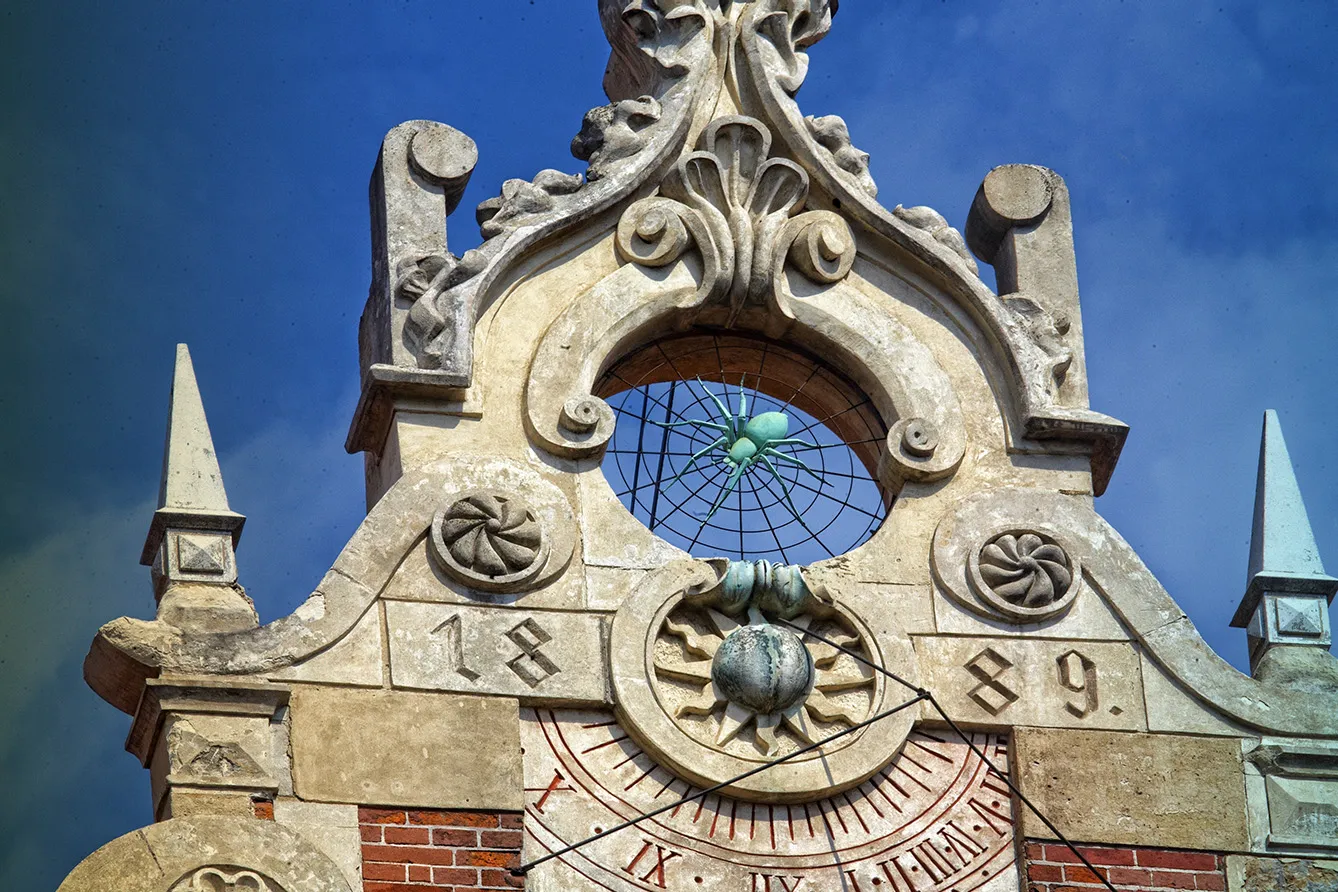Neogothic architecture (as all historic neo-styles, for that matter) had mostly one goal. No matter whether we are talking about an old society, such as France, or a forming/re-creating/consolidating nation from previously divided Germany eastward, architectural styles were looking for the roots to find some firm heritage in the nation’s past.
Hence dozens, or rather thousands of neogothic buildings, town halls, and cathedrals proudly state: this style is ours and refers to our history. The problem with neogothic? In most cases, it looks too obviously neo-, too straight, too true to form, and too coherent in style to look like thousand-year-old edifices. Enters Teodor Talowski, the guy who knew how to deal with that.
Teodor Talowski, the monumental historian

To get the idea, take a walk in Cracow, where the most interesting examples of Talowski’s eye for detail are built. Born in 1857 in the Polish part of the Carpathians, educated in Cracow, and then educated in architecture in Lwów (now Lviv in Ukraine) and in Vienna, Cracow is the city where he settled and began his successful, now underappreciated, career.
Although perhaps his most monumental work is St Elizabeth Church in Lviv (which, along with Cracow, was part of the same Galician autonomy in the Austrian-Hungarian Empire back at the beginning of the 20th century), Talowski’s residential buildings in Cracow build during the 1890s are even more interesting. Take a look at names: The Singing Frog, The Donkey, The Spider, Think Long – Act Fast, or Festina Lente, Latin for “make haste slowly.” But the names are just the beginning of the story – look at the façades! Every one of them delivers the promise.
The singing frog and the spider
Dated 1889-1890, the Singing Frog has the eponymous figure sitting in a dormer and playing the mandolin that, in a prophetic manner, predated Kermit the Frog’s banjo “Rainbow Connection” by decades. The walls are also decorated with a border featuring a string of notes on the stave as a variation of an Ancient Greek architrave. Afraid of spiders? Make sure to miss busy Karmelicka Street, where a giant arachnid inhabits its web on the top of a corner house. The Donkey? Checked. The Dragon? Checked.
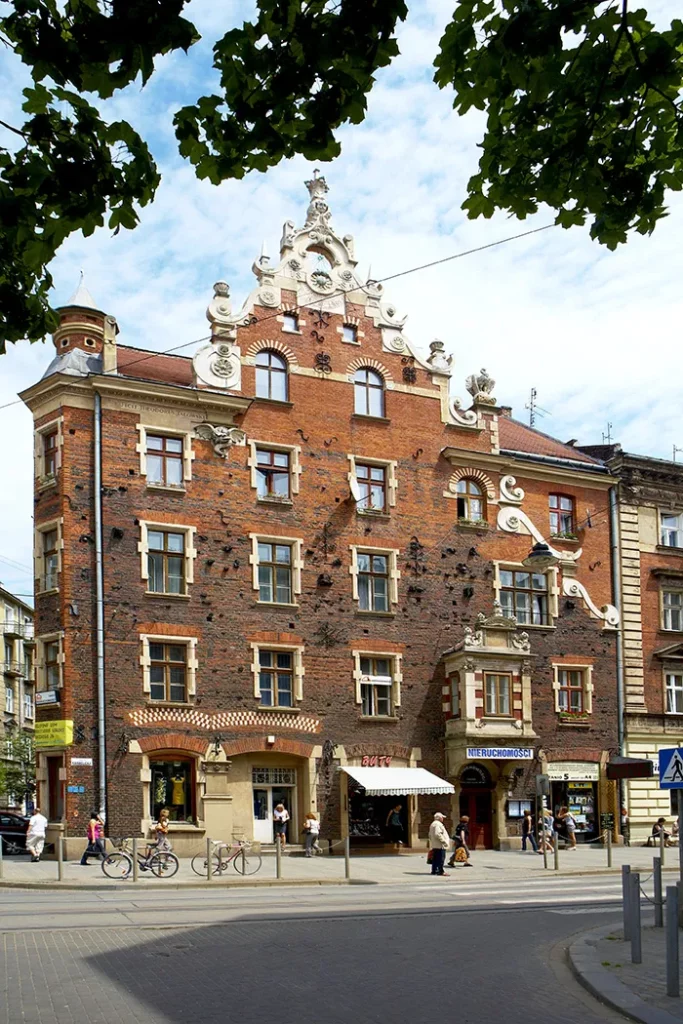
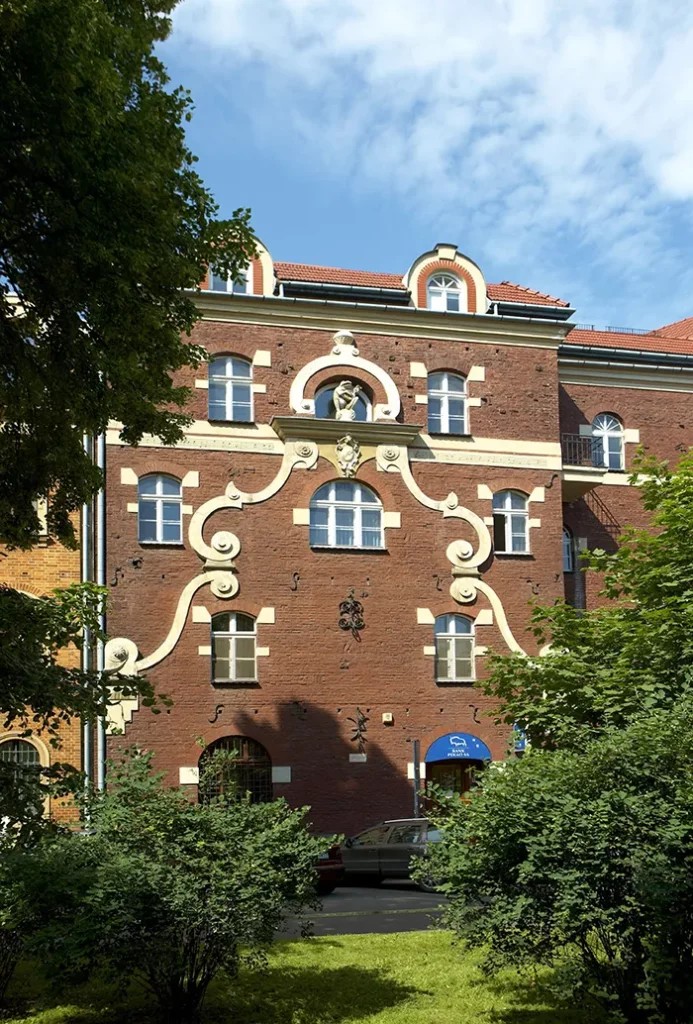
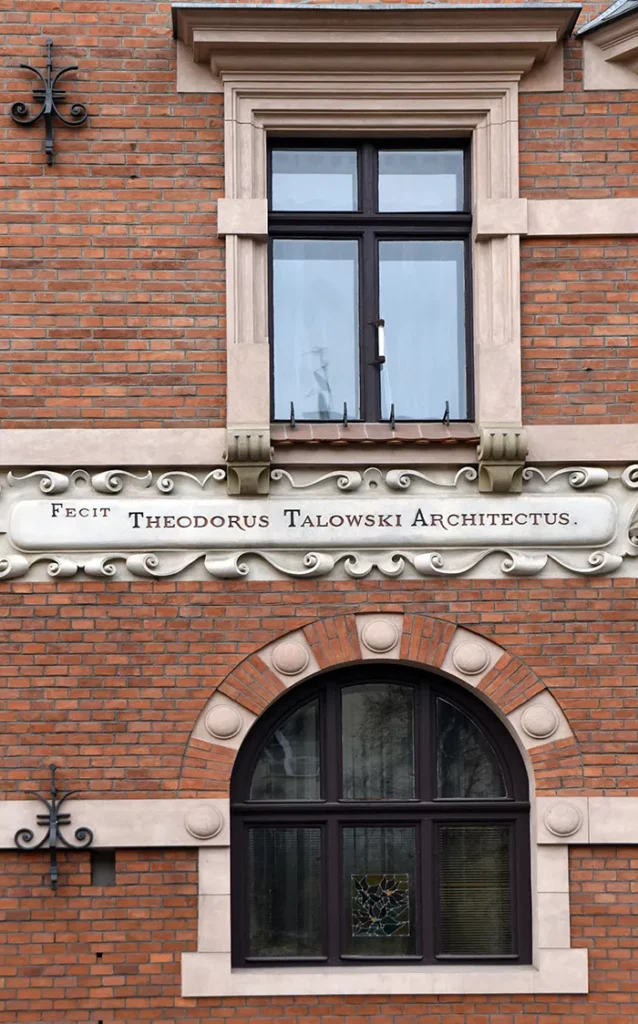
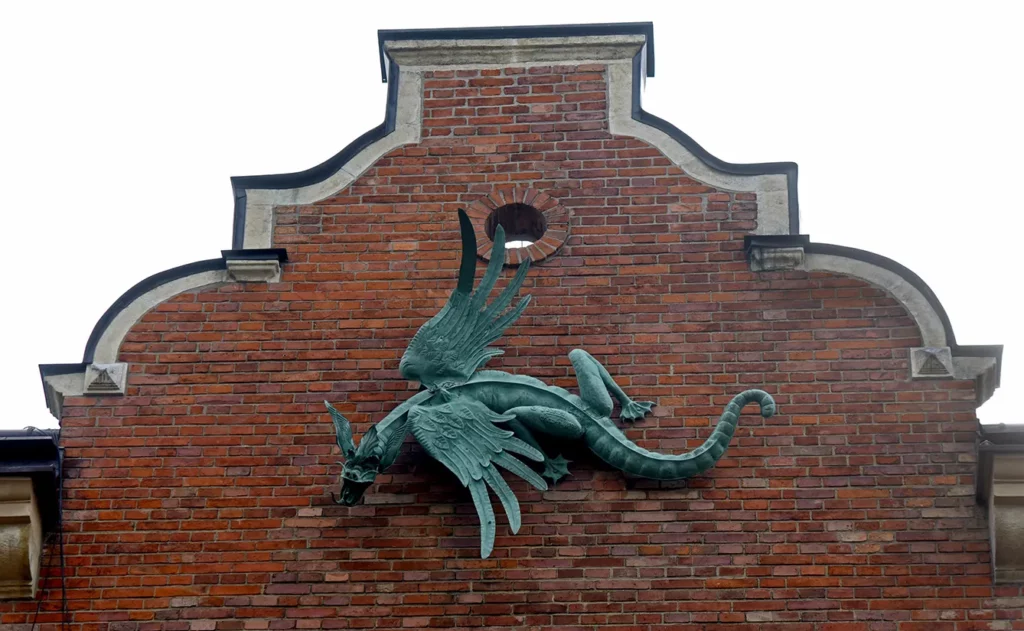
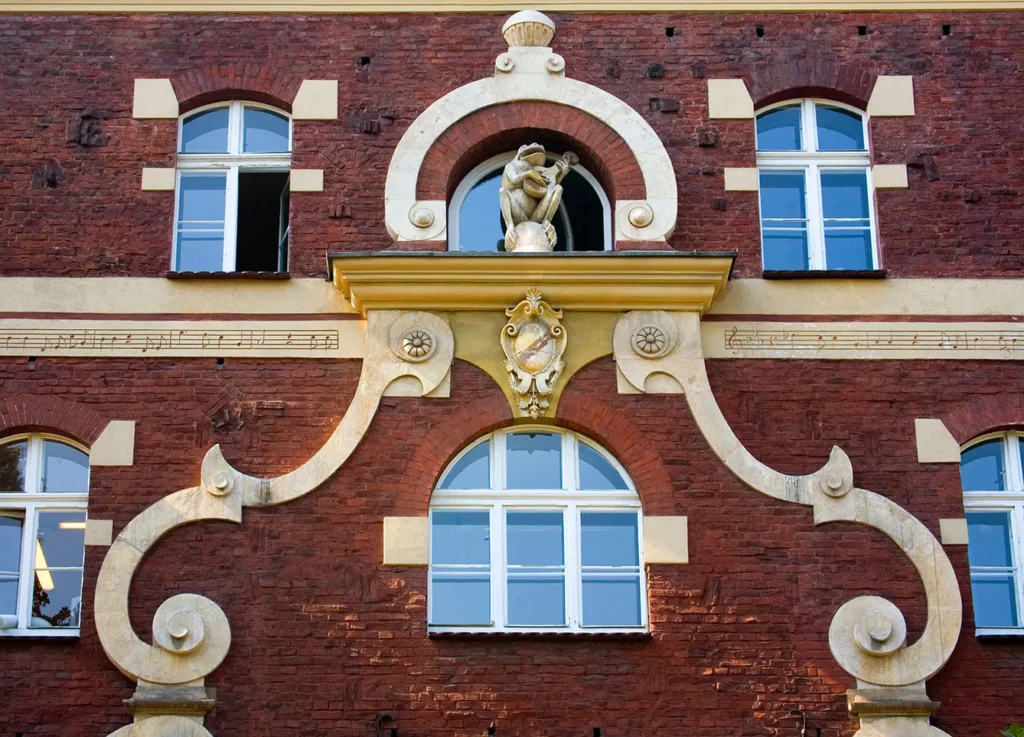
Festina Lente – yup, but only as a maxim inscribed on the façade. Or was it? This was the house Teodor Talowski built for himself, so perhaps making haste slowly was what was going on inside. But perhaps more interesting is the sense of embedding history into the building. None of them is neogothic per se, nor is it neo-renaissance or neo-baroque. With his own, kinda messy eye for detail, Talowski implemented a sense of architecture developed over time into his ready-made designs.
In his buildings, the bricks vary in color; stone pieces seem to refill gaps in the brick wall; loggias and bay windows look as if they were added decades after the original plan was laid; and so do stone arches misfit with what looks like an older wall. Historicizing modern buildings, Teodor Talowski may have achieved the epitome of historicism in Central Europe itself. He managed to create an impression of continuity in history, which was one of the most important goals for art at the time of forming modern nations.


